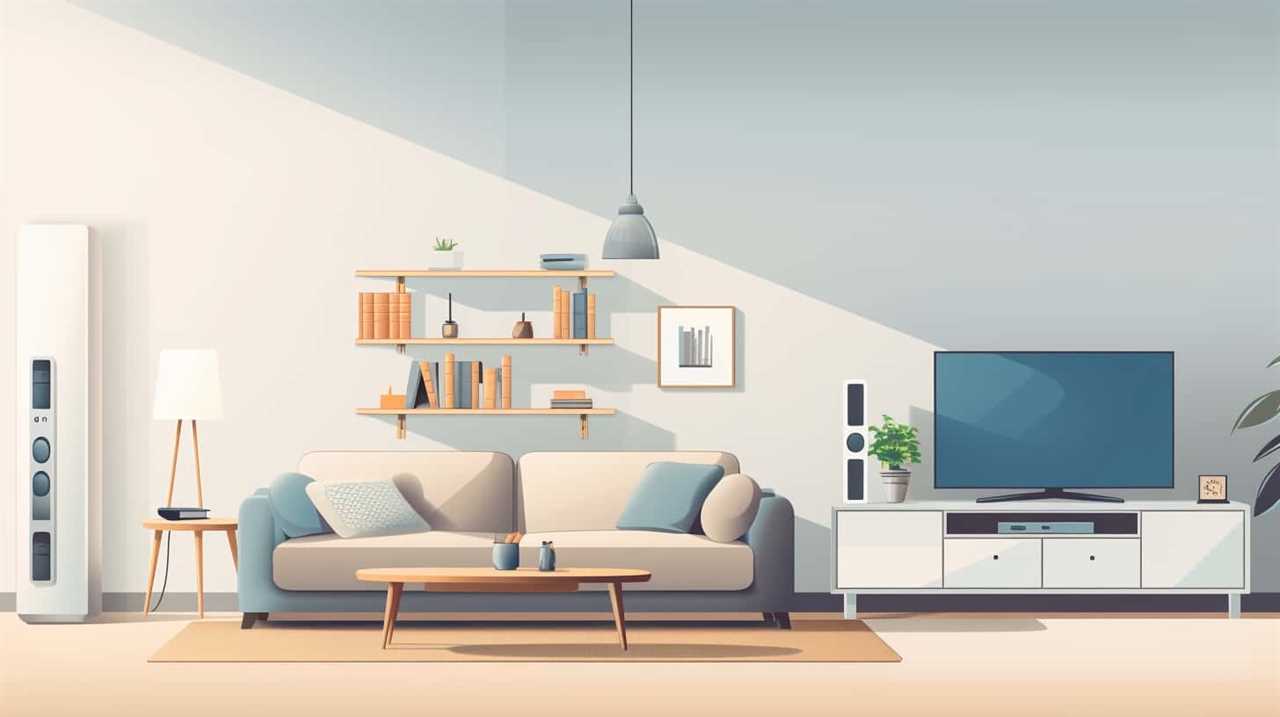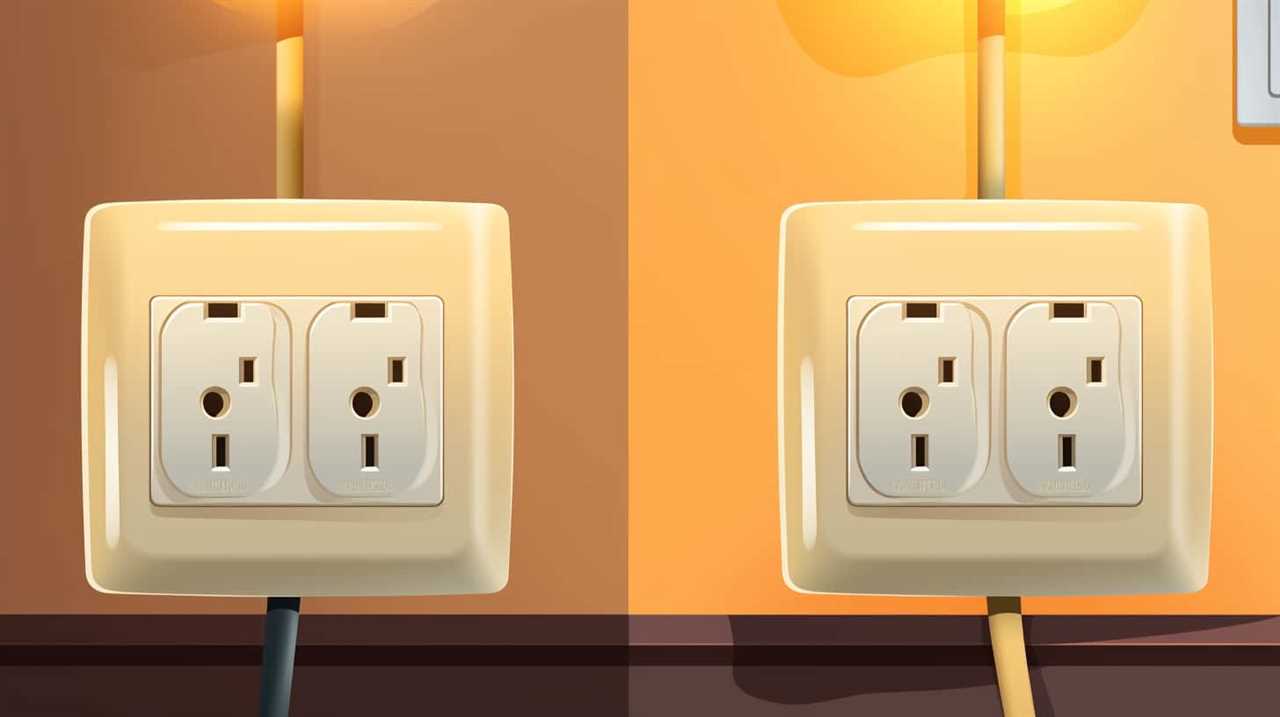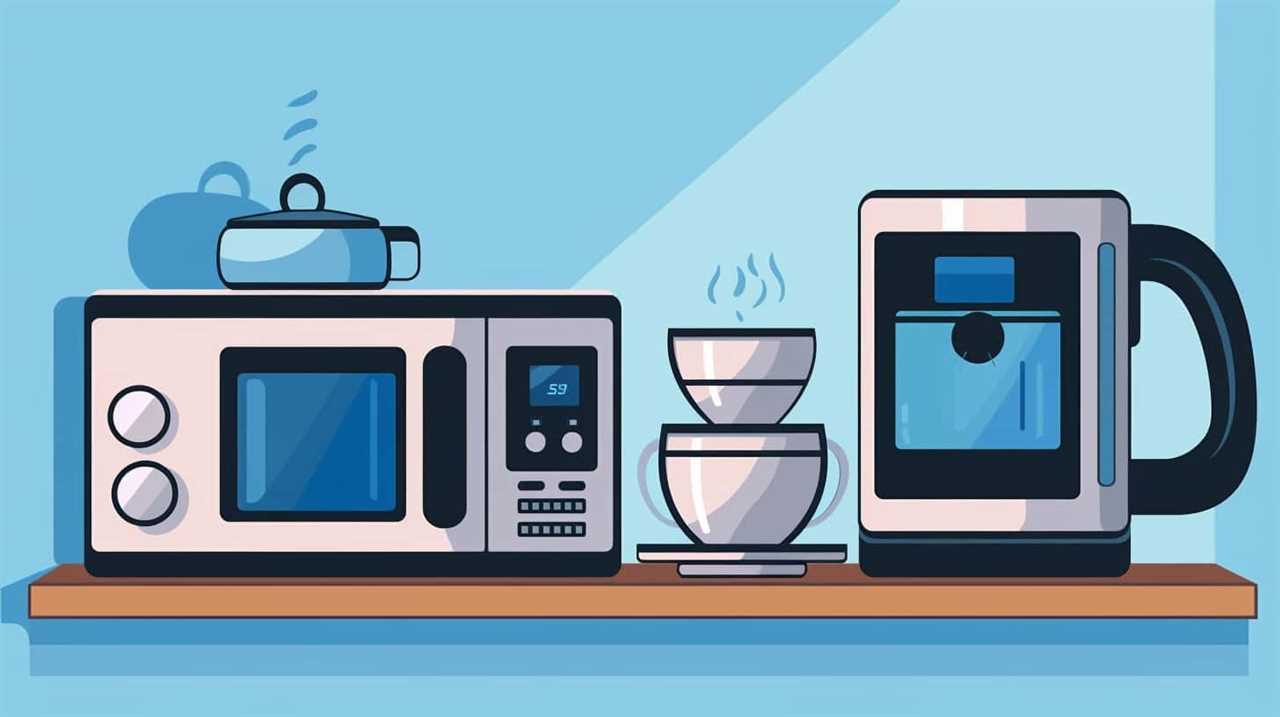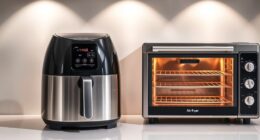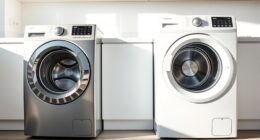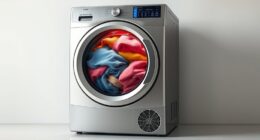Are you considering bringing your UK appliances to the USA? Hang tight because we have some crucial information for you.
In this article, we’ll dive into the world of voltage differences, plug types, power adapters, and more. So, if you’re wondering if your beloved UK appliances can be used in the USA, keep reading because we’ve got all the answers you need to make your transition smooth and hassle-free.
Let’s get started!
Key Takeaways
- UK appliances designed for 230 volts may not work properly in the USA due to the lower voltage of 120 volts.
- Adapters are available to address voltage differences and plug compatibility between UK and US appliances, but they may come at an additional cost.
- UK appliances require an adapter or voltage converter to be used in the USA, as they cannot be directly plugged into US outlets.
- Safety considerations, such as adhering to electrical standards and using surge protectors, are important when using UK appliances in the USA to ensure proper functioning and prevent damage.
Voltage Differences
We found that voltage differences between the UK and the USA can pose a challenge when using appliances from one country in the other. The UK operates on a voltage of 230 volts, while the USA operates on a voltage of 120 volts. This means that UK appliances designed for 230 volts may not work properly in the USA due to the lower voltage.
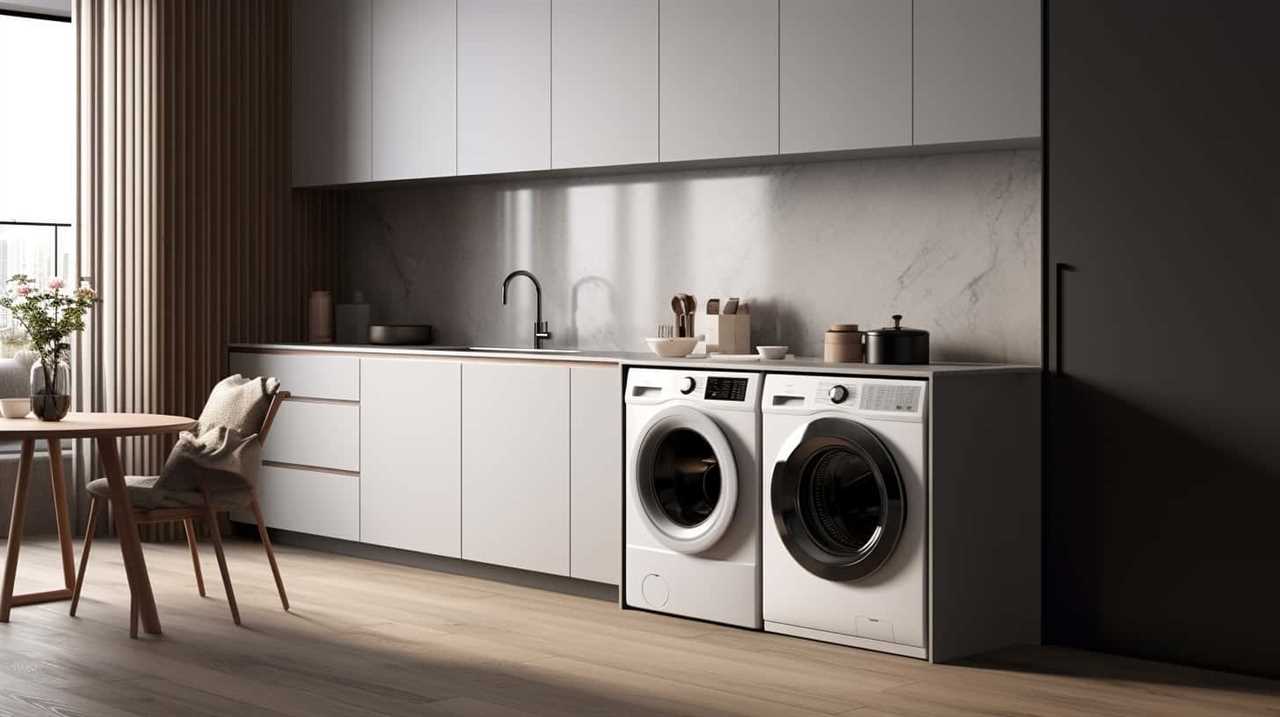
In addition to the voltage difference, plug types also differ between the two countries. The UK uses the three-pin plug type, while the USA uses the two-pin plug type. This further complicates the compatibility of UK appliances in the USA.
However, there are adapter options available that can help address these voltage and plug type differences, allowing UK appliances to be used in the USA with the appropriate adapter.
Plug Types
Now let’s talk about plug types when it comes to using UK appliances in the USA.
The first point to consider is the compatibility of the appliance’s plug with the outlets in the USA. It’s important to ensure that the prongs and voltage requirements match to avoid any issues.

Additionally, it’s worth noting that adapters are available to help with plug compatibility, but they may come at an additional cost.
Compatibility With Outlets
When using UK appliances in the USA, it’s important to consider the compatibility with outlets and plug types.
The plug compatibility between the two countries is different due to variations in electrical systems and safety regulations. In the UK, appliances typically use a three-pin plug with rectangular pins. On the other hand, the USA uses a two-pin plug with flat pins.
This difference in plug types means that UK appliances can’t be directly plugged into US outlets. To use UK appliances in the USA, you’ll need to use an adapter or a voltage converter.
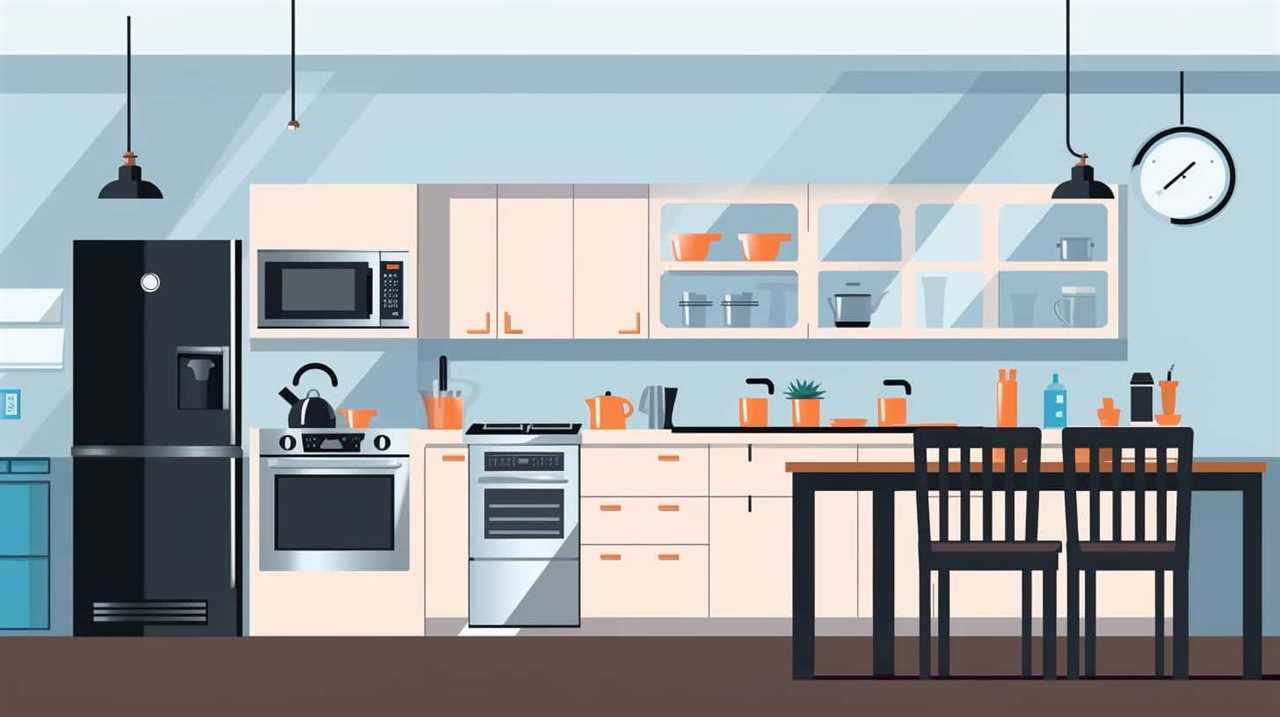
It’s crucial to ensure that the adapter or converter you choose is suitable for the specific appliance and meets safety regulations to prevent electrical hazards. Always consult the manufacturer’s instructions and guidelines for proper usage.
Adapter Availability and Cost
To continue our discussion on the compatibility of UK appliances in the USA, let’s explore the availability and cost of adapters for plug types.
When using UK appliances in the USA, it’s important to consider the differences in plug types and voltage. UK appliances typically use three-pin plugs, while the USA uses two-pin plugs. Adapters are readily available to convert UK plugs to fit into US outlets. These adapters can be found at electronics stores, online retailers, and even some convenience stores.
The cost of adapters can vary depending on the brand and quality, but generally, they’re affordable and range from $5 to $20.
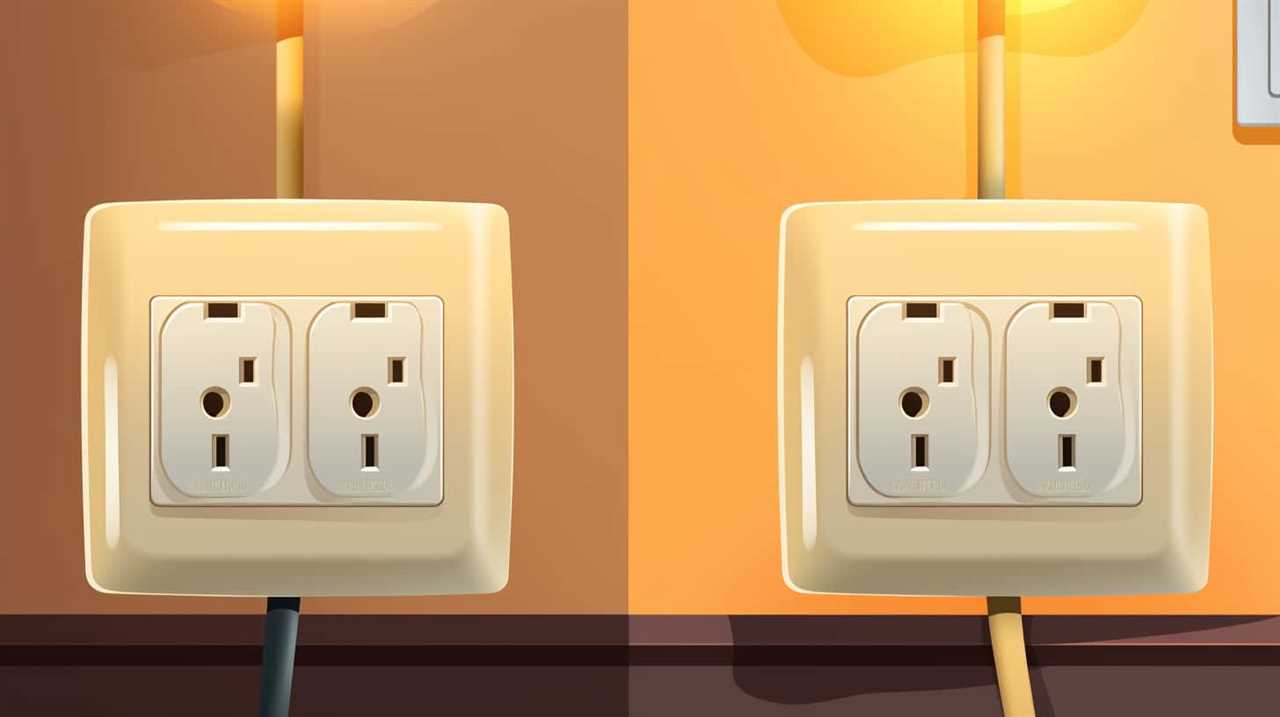
It’s important to note that while adapters enable the physical connection, they don’t convert voltage. To ensure the compatibility of UK appliances in the USA, a voltage converter may be necessary.
Power Adapters
When using UK appliances in the USA, it’s important to consider the voltage compatibility. Different countries have different voltage standards, and using a UK appliance in the USA may require a power adapter to convert the voltage.
There are different types of power adapters available, such as step-up or step-down transformers, that can help adjust the voltage accordingly. However, it’s crucial to be aware of the potential risks involved, such as overheating or damage to the appliance, and to choose the right power adapter for safe and efficient usage.
Voltage Compatibility Explained
In our experience, power adapters are essential for ensuring voltage compatibility when using UK appliances in the USA.
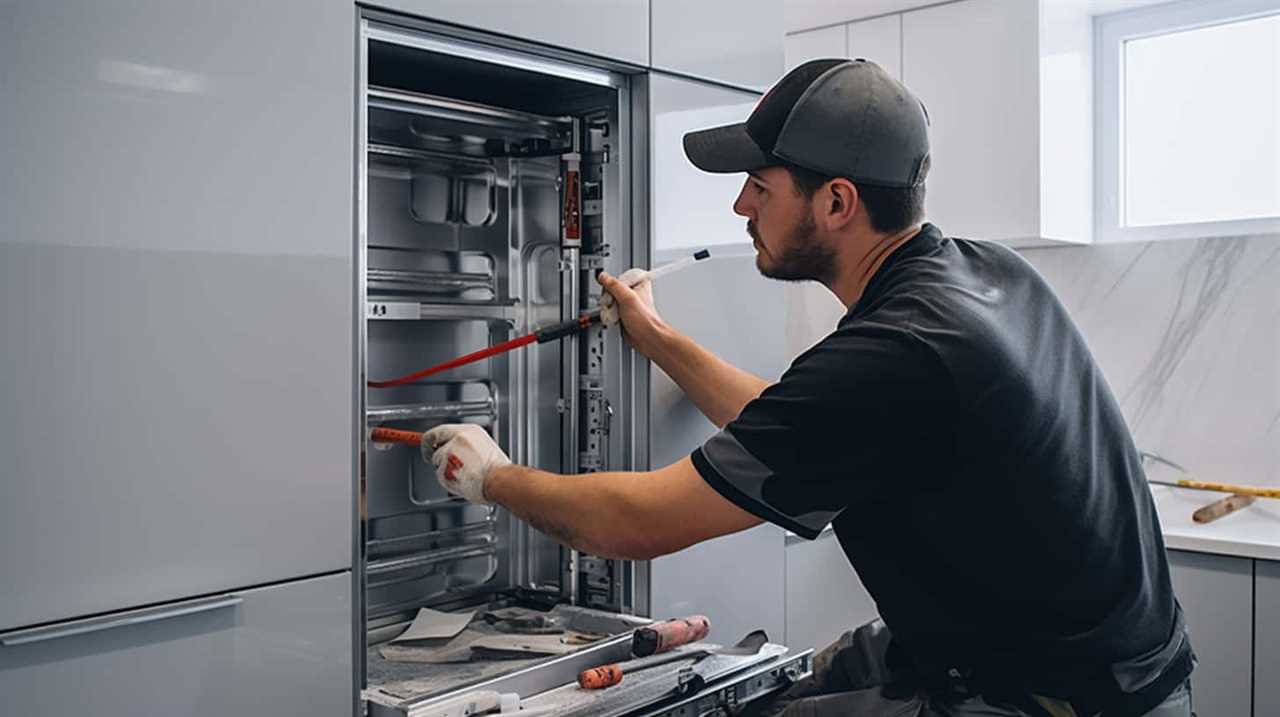
The first consideration is plug compatibility. UK appliances have three-pronged plugs, while US outlets have two flat pins. Power adapters solve this problem by providing the appropriate plug shape for the US outlets.
However, plug compatibility alone isn’t enough. The voltage in the UK is 220-240 volts, whereas in the US it’s only 110-120 volts. This voltage difference can damage UK appliances if not addressed.
To address this issue, converter options are available. Converters change the voltage from 110-120 volts to the UK standard of 220-240 volts, allowing UK appliances to safely operate in the US.
It’s crucial to choose the correct converter based on the wattage and type of appliance to ensure compatibility and prevent any damage.
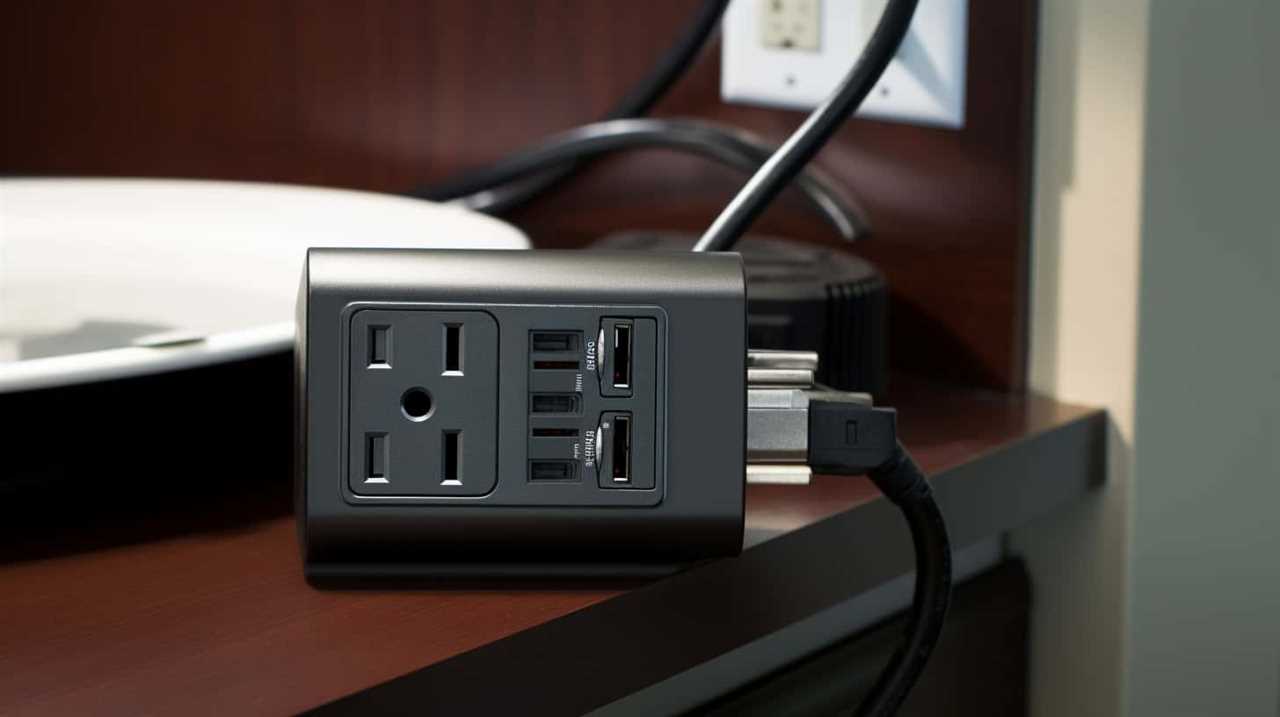
Types of Power Adapters
We prefer using power adapters that are compact and easy to use. When it comes to powering our devices in different countries, we need to consider the types of power adapters available. These adapters allow us to plug our devices into different types of electrical outlets, ensuring compatibility with the local power supply. Power adapters come in various shapes and sizes, but they all serve the same purpose. They allow us to connect our devices to the local power source by adapting the plug shape and voltage. It’s important to note that power adapters only adapt the plug shape and not the voltage. For voltage compatibility, a power converter may be required. When choosing a power adapter, it’s essential to consider international standards to ensure compatibility with different outlets around the world.
| Type of Power Adapter | Description | Countries |
|---|---|---|
| Type A | US/Japan | USA, Canada, Mexico, Japan, and more |
| Type C | Europe | Most European countries, South America, and Asia |
| Type G | UK | UK, Ireland, Singapore, and more |
| Type I | Australia | Australia, New Zealand, China, and more |
Table 1: Types of Power Adapters and Their Compatible Countries.
Potential Risks Involved
As we explore the potential risks involved with power adapters, it’s important to consider the impact they can have on the compatibility and safety of our devices.
When using UK appliances in the USA, one potential hazard is the difference in voltage. UK appliances operate on 220-240 volts, while the USA operates on 110-120 volts. Plugging a UK appliance directly into a US power outlet can result in damage to both the appliance and the power adapter.

To mitigate this risk, it’s crucial to use a voltage converter or transformer to ensure the appropriate voltage is supplied to the appliance.
Additionally, safety precautions such as checking for compatibility, using surge protectors, and following the manufacturer’s instructions are necessary to prevent electrical accidents or fires.
Transformer Requirements
To use UK appliances in the USA, there are certain requirements for transformers. UK appliances operate on a voltage of 230 volts, while the US electrical system uses 120 volts. Therefore, to ensure proper functionality and electrical safety, a voltage conversion is necessary. A transformer is a device that converts the voltage from one level to another, allowing UK appliances to be used in the USA.
When choosing a transformer, it is crucial to consider the wattage and frequency compatibility. The wattage rating of the transformer should be equal to or higher than the power consumption of the appliance. Additionally, the frequency of the transformer should match the frequency of the electrical system in the USA, which is typically 60 Hz.

Here is a table highlighting the different transformer requirements for UK appliances in the USA:
| Transformer Requirement | Description |
|---|---|
| Voltage Conversion | Converts the voltage from 230V to 120V |
| Wattage Compatibility | Transformer wattage should be equal to or higher than the appliance power consumption |
| Frequency Compatibility | Frequency of the transformer should match the electrical system frequency in the USA (60 Hz) |
Electrical Safety Standards
When considering the use of UK appliances in the USA, it’s important to adhere to electrical safety standards. These standards ensure the safety and proper functioning of electrical devices. Here are some key points to consider regarding electrical safety regulations:
- Electrical wiring: Ensure that the electrical wiring in your home or establishment meets the safety standards set by the local authorities. Faulty or outdated wiring can pose serious risks, such as electrical fires or electric shock.
- Safety regulations: Familiarize yourself with the safety regulations specific to the USA. These regulations cover aspects such as electrical grounding, circuit protection, and the use of appropriate electrical outlets and plugs.
- Compliance certification: Look for appliances that have been certified by recognized testing organizations. This certification ensures that the appliance meets the required safety standards.
- Surge protection: Consider using surge protectors to safeguard your appliances from power surges, which can damage electrical equipment.
- Regular inspections: Periodically inspect your electrical appliances and wiring for any signs of wear or damage. Promptly address any issues to prevent potential hazards.
Adhering to electrical safety standards is crucial for the safe and efficient operation of UK appliances in the USA.
Now, let’s explore another important aspect: frequency variation.

Frequency Variation
We frequently encounter a significant challenge when using UK appliances in the USA: frequency variation.
The frequency in the UK is 50 Hz, whereas in the USA it’s 60 Hz. This difference in frequency can cause issues when attempting to use UK appliances in the USA.
Many UK appliances are designed to operate specifically at the UK frequency of 50 Hz and may not function properly at the higher frequency of 60 Hz. This can lead to performance issues, overheating, and even damage to the appliance.
It’s important to consider frequency limitations when using UK appliances in the USA and ensure that the power supply compatibility is suitable for the appliance to avoid any potential problems.
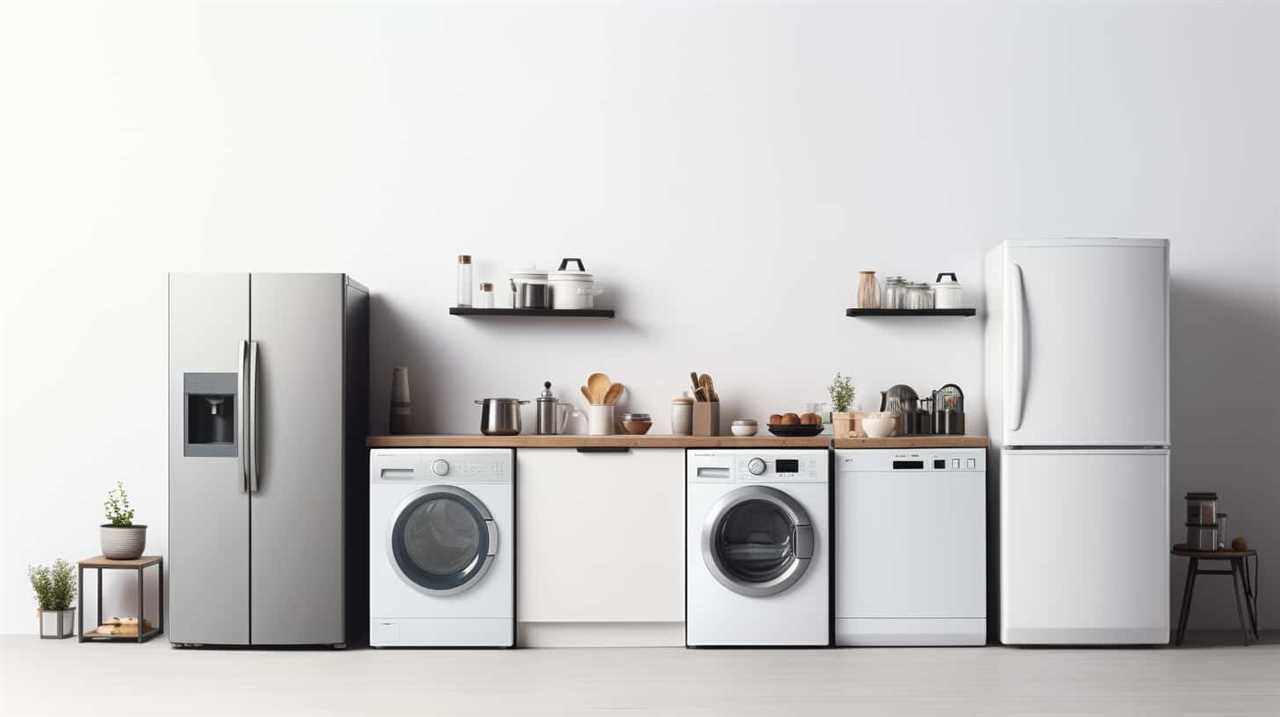
Compatibility of Small Appliances
When considering the compatibility of small appliances between the UK and the USA, there are a few key points to keep in mind.
Firstly, voltage differences exist between the two countries, with the UK operating on 220-240 volts and the USA on 110-120 volts. This means that UK appliances may not function properly without the use of a voltage converter or transformer.
Additionally, it’s important to consider adapter requirements for plug compatibility, as the UK uses a different plug type than the USA.
Lastly, safety considerations should be taken into account when using UK appliances in the USA, as different electrical standards and regulations may apply.
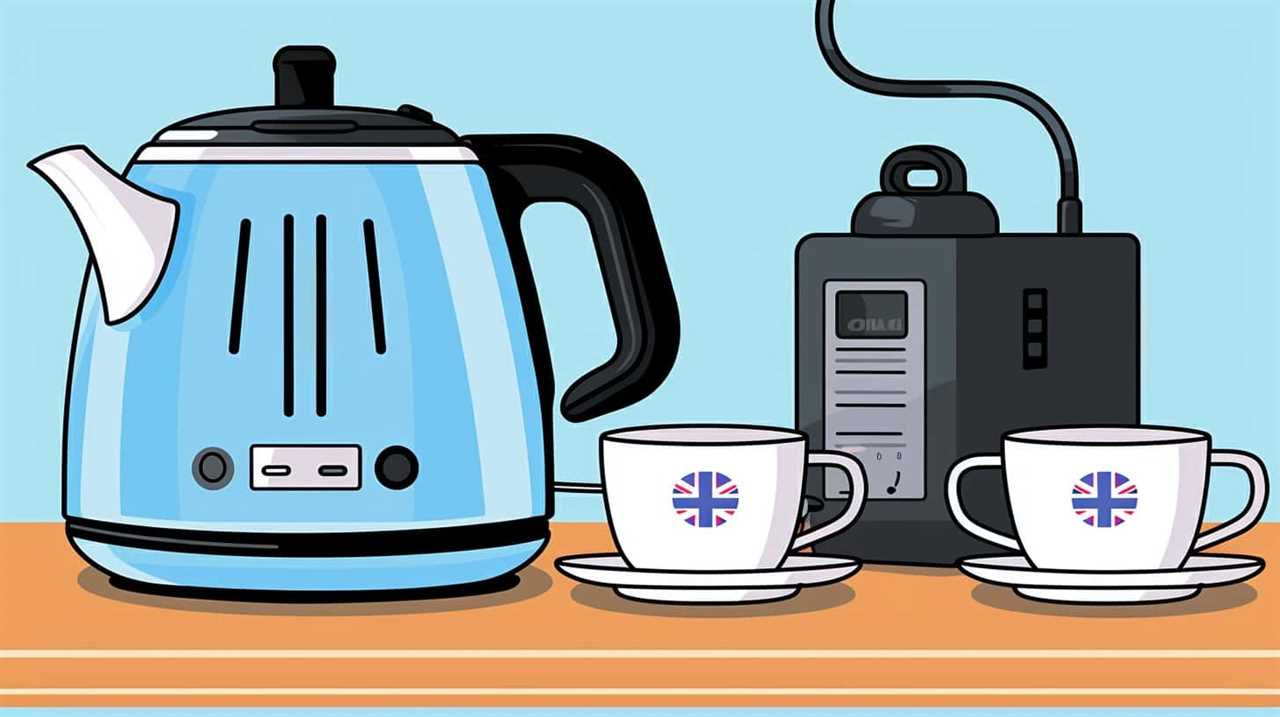
Voltage Differences Explained
Although there are voltage differences between the UK and the US, small appliances can still be used with the help of voltage converters. These converters can transform the UK’s 230V electrical supply to the US standard of 120V, ensuring compatibility. Here are some key points to consider regarding voltage differences and the use of voltage converters:
- Voltage converters are readily available and can be purchased online or at electronics stores.
- It’s crucial to choose a voltage converter that matches the wattage requirements of the appliance to avoid damage.
- Using voltage converters may void the appliance warranties, so it’s important to check with the manufacturer before making any conversions.
- It’s advisable to consult a professional electrician for guidance on the specific requirements of your appliances.
- Always follow the manufacturer’s instructions and safety guidelines when using voltage converters to ensure proper usage.
Understanding these voltage differences and the use of voltage converters will help ensure the safe and efficient operation of small appliances when using them in different countries. Now, let’s delve into the next section about the adapter requirements for use.
Adapter Requirements for Use
To ensure compatibility of small appliances, it’s essential to consider the adapter requirements for use.
When using UK appliances in the USA, the main concern is the difference in voltage between the two countries. The UK operates on a voltage of 230 volts, while the USA operates on a voltage of 120 volts. Therefore, it’s necessary to use an adapter that can convert the voltage from 230 volts to 120 volts.
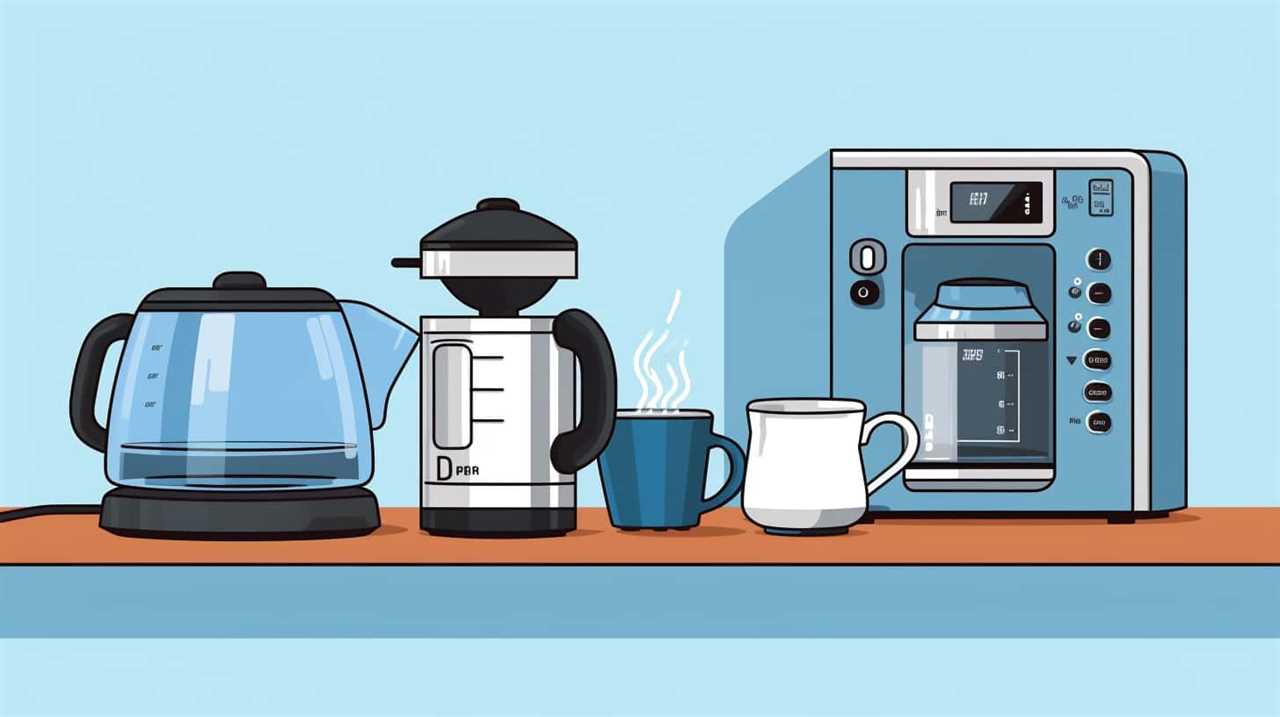
This adapter compatibility is crucial to prevent damage to the appliance and ensure its safe and efficient operation. It’s important to note that not all appliances are compatible with voltage conversion, so it’s necessary to check the appliance’s specifications before using an adapter.
Now, let’s move on to discussing the safety considerations when using these adapters.
Safety Considerations When Using
One important safety consideration when using UK appliances in the USA is the need for proper voltage conversion. Electrical systems in the UK operate at 220-240 volts, while in the USA, the standard voltage is 110-120 volts. Failing to convert the voltage can lead to potential hazards, such as overheating, electrical shocks, or even fires.
To ensure safety when using UK appliances in the USA, it’s essential to follow electrical regulations and take the necessary precautions. Here are five key considerations:
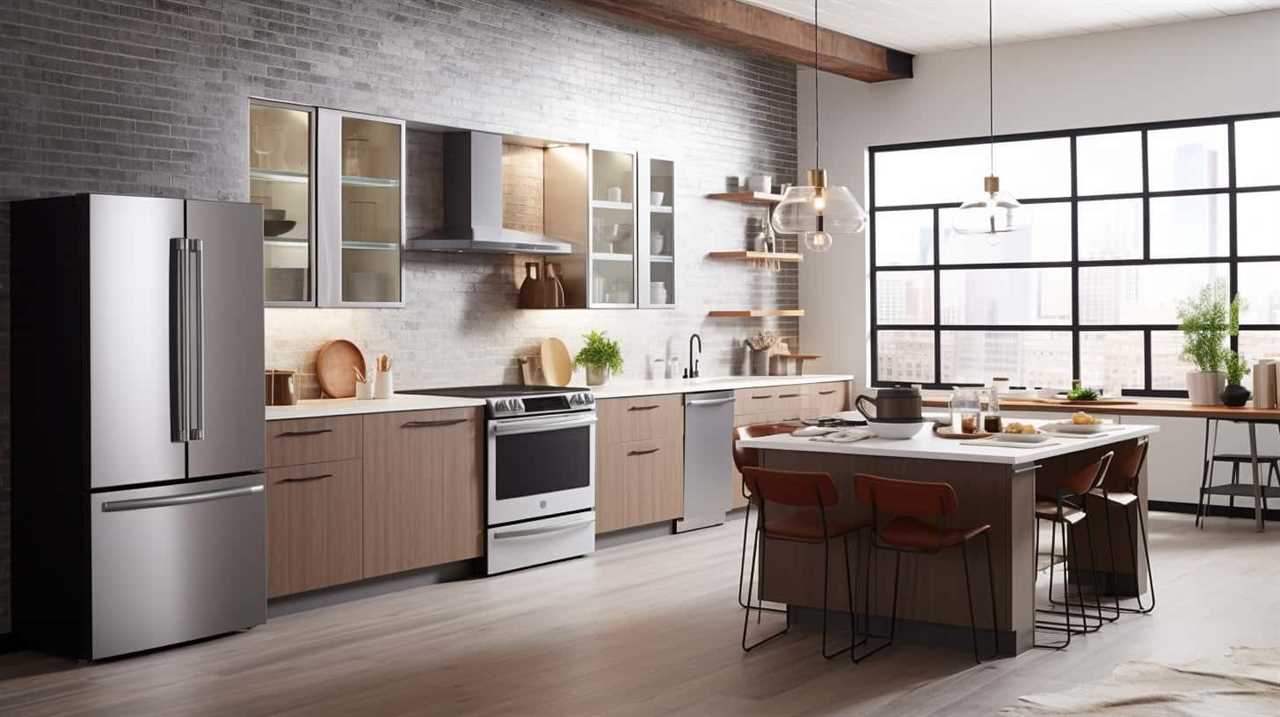
- Use a voltage converter or transformer to match the UK appliance’s voltage requirements with the US electrical system.
- Check the wattage capacity of the converter or transformer to ensure it can handle the power needs of the appliance.
- Use grounded outlets and adapters that comply with US electrical standards.
- Regularly inspect the appliance for any signs of damage or wear that could pose a safety risk.
- Follow manufacturers’ instructions and guidelines for proper use and maintenance of the appliance.
Compatibility of Large Appliances
The compatibility of large appliances between the UK and the USA varies due to differences in voltage and electrical standards.
One major difference is the plug compatibility. In the UK, three-pin plugs are commonly used, while the USA uses two-pin plugs. This means that UK appliances may not physically fit into US electrical outlets without an adapter.
Additionally, the UK operates on a 230-volt electrical system, while the USA operates on a 120-volt system. This difference in voltage can cause UK appliances to malfunction or even get damaged if used directly in the USA.
To address this issue, voltage converters can be used to step down the voltage from 230 volts to 120 volts, ensuring the safe and proper operation of UK appliances in the USA.
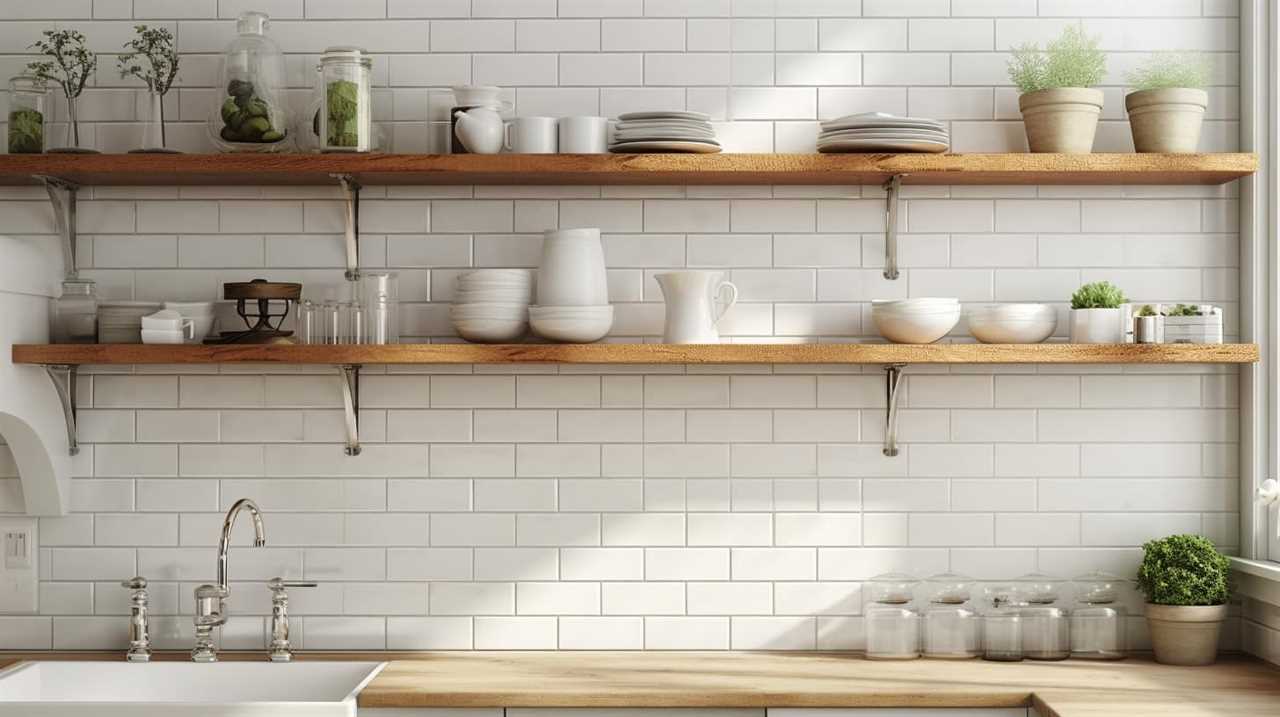
Kitchen Appliance Challenges
When it comes to using UK appliances in the USA, we face a number of challenges with kitchen appliances. These challenges include:
- Voltage differences: UK appliances typically operate on 220-240 volts, while the USA uses 110-120 volts. This requires the use of voltage converters or transformers to ensure compatibility.
- Plug types: The UK uses three-pin plugs, whereas the USA uses two-pin plugs. Adapters or rewiring may be necessary to connect UK appliances to US outlets.
- Frequency variations: UK appliances are designed to operate at 50 hertz, while the USA uses 60 hertz. This can affect the performance of certain appliances, such as microwaves and electric ovens.
- Maintenance considerations: UK appliances may require different maintenance procedures and spare parts, which may not be easily available in the USA.
- Energy efficiency differences: UK appliances often have different energy efficiency ratings compared to US appliances. It’s important to consider energy consumption and efficiency when using UK appliances in the USA.
These challenges highlight the importance of understanding the compatibility and maintenance requirements of UK kitchen appliances when using them in the USA.
Moving on to the next section, we’ll now discuss the challenges related to bathroom appliances.
Bathroom Appliance Challenges
We have encountered several challenges with bathroom appliances when it comes to using UK appliances in the USA. One major challenge is the difference in voltage and frequency between the two countries. In the UK, the standard voltage is 230 volts at a frequency of 50 Hz, while in the USA, it’s 120 volts at a frequency of 60 Hz. This difference can cause compatibility issues when it comes to bathroom appliance installation.

Additionally, there may be differences in electrical wiring and plug types, which can further complicate the installation process. It’s also important to consider bathroom appliance maintenance, as UK appliances may require different replacement parts or servicing procedures compared to those available in the USA.
Moving on from bathroom appliances, let’s now discuss the challenges with electronics and entertainment devices.
Electronics and Entertainment Devices
When it comes to using UK electronics and entertainment devices in the USA, there are a few important considerations.
Firstly, voltage compatibility is crucial, as UK devices operate on 220-240 volts while the US uses 110-120 volts.
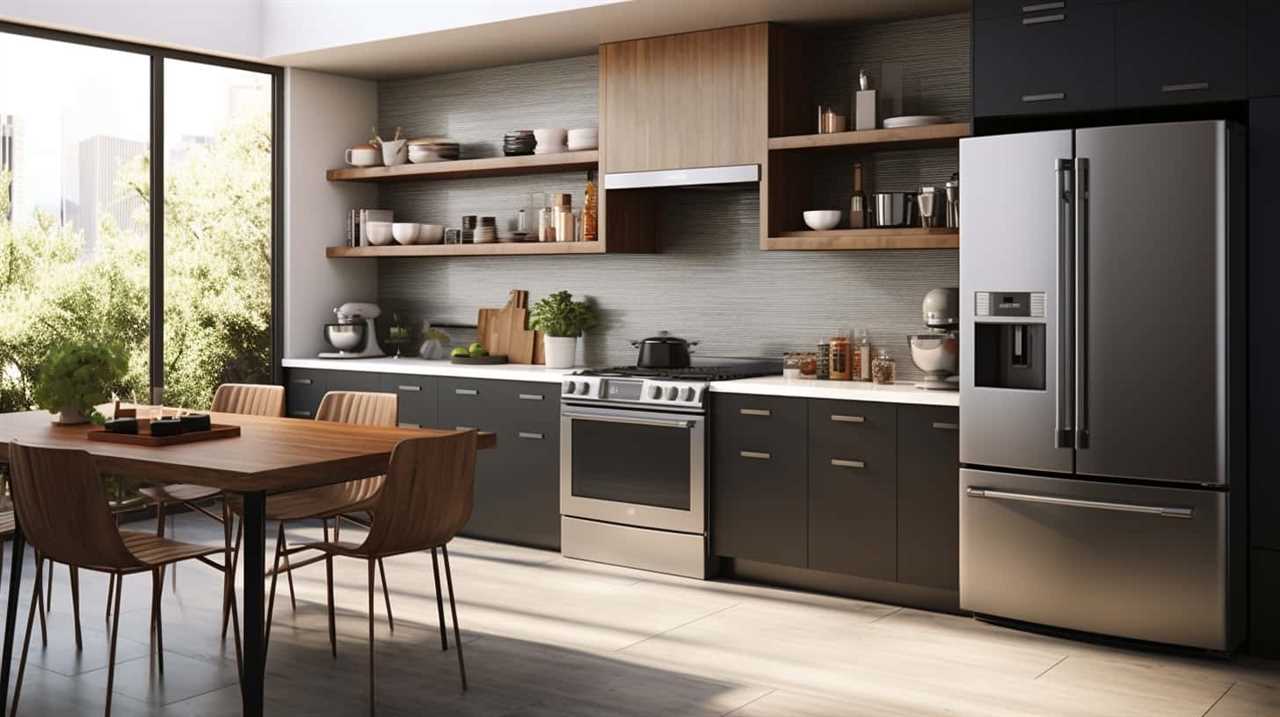
Secondly, plug and socket differences can pose a challenge, as the UK uses three rectangular pins while the US uses two flat pins or two flat pins with a grounding pin.
Lastly, it’s important to check if the device is region-specific, as some electronics may only work in certain regions due to regional coding or broadcasting standards.
Voltage Compatibility for Electronics
To determine if UK appliances can be used in the USA, we need to consider the voltage compatibility for electronics and entertainment devices. The UK operates on a 230V electrical system, while the USA uses a 120V system. This means that UK appliances designed for use with 230V may not work properly or could even be damaged when plugged into a 120V outlet in the USA.
It’s important to ensure that any UK appliances being used in the USA are compatible with the lower voltage. This can be done by using a voltage converter or transformer to adjust the voltage to the appropriate level. However, it’s essential to prioritize electrical safety and consult a professional if unsure about the compatibility of a particular appliance.

Different voltage standards can lead to appliance malfunction or damage. Compatibility issues can pose safety risks. The use of a voltage converter or transformer may be necessary. Professional advice should be sought to ensure electrical safety. Prioritizing safety is crucial when using UK appliances in the USA.
Plug and Socket Differences
For using UK appliances in the USA, it’s important to consider the differences in plug and socket configurations between the two countries.
The main difference lies in the shape and design of the plugs and sockets. In the UK, appliances typically use three-pronged plugs with rectangular pins, while in the USA, two-pronged plugs with flat pins are more common.
This means that UK appliances won’t fit directly into US sockets without an adapter. It’s crucial to ensure plug and socket compatibility to avoid any damage to the appliance or the electrical system.

Additionally, voltage conversion may also be required, as the UK operates on a 230V system, whereas the US uses a 120V system. Therefore, it’s essential to use a voltage converter or transformer to match the voltage requirements of the UK appliances to the US electrical system.
Region-Specific Device Compatibility
We found that region-specific device compatibility for electronics and entertainment devices can vary when using UK appliances in the USA. It’s important to consider voltage converters and international power standards to ensure proper functioning of these devices.
Here are some key points to consider:
- Voltage Differences: The UK operates on a 220-240V electrical system, while the USA uses a 110-120V system. This means that UK devices may not work properly in the USA without a voltage converter.
- Plug Types: The UK uses Type G plugs, which have three rectangular prongs, while the USA uses Type A and B plugs with two flat or round prongs. Adapters may be necessary to connect UK devices to US power outlets.
- Frequency Variation: The UK operates on a 50Hz frequency, while the USA uses a 60Hz frequency. Some devices may not be compatible with the frequency difference, leading to potential issues.
- Power Ratings: It’s crucial to check the power ratings of UK appliances to ensure they’re within the limits of the US electrical system. Using devices with higher power ratings may lead to damage or malfunction.
- International Power Standards: To ensure compatibility, look for devices that comply with international power standards, such as those with dual voltage capabilities or devices specifically designed for global use.
Considering these factors will help ensure that UK appliances can be used safely and effectively in the USA.

Heating and Cooling Systems
While living in the UK, we may find that our heating and cooling systems differ from those commonly used in the USA. In terms of heating system installation, the UK primarily relies on centralized heating systems, such as boilers, which heat water and circulate it through radiators or underfloor heating systems. On the other hand, the USA commonly uses forced-air heating systems, where heated air is distributed through ductwork and vents.
When it comes to cooling system maintenance, the UK often uses portable air conditioning units or evaporative coolers, while the USA typically employs central air conditioning systems. It’s important to consider these differences when relocating to the USA and ensure that the appropriate heating and cooling systems are installed or maintained accordingly.
Moving on to the next section, let’s discuss laundry appliances.
Laundry Appliances
Moving on to laundry appliances, let’s now explore how they differ between the UK and the USA.

When it comes to laundry appliances, there are a few key differences to consider:
- Voltage compatibility: In the UK, laundry appliances typically operate on a voltage of 220-240V, while in the USA, the standard voltage is 110-120V. This means that UK appliances may not work properly in the USA without a voltage converter.
- Plug type: The UK uses a three-pin plug, while the USA uses a two-pin plug. Adapters or rewiring may be necessary to connect UK laundry appliances to US outlets.
- Size and capacity: Laundry appliances in the UK are often smaller in size and have lower capacity compared to those in the USA. This is important to consider when purchasing or importing appliances.
- Energy efficiency standards: The UK has stricter energy efficiency standards for laundry appliances compared to the USA. This can impact the performance and energy consumption of the appliances.
- Laundry care features: Laundry appliances in the UK may have different settings and features compared to those in the USA. It’s essential to check the product specifications to ensure compatibility and desired functionality.
Considering these differences, it’s crucial to carefully assess the compatibility of laundry appliances and their voltage requirements before using them in a different country.
Considerations for Travelers
When traveling from the UK to the USA, there are important considerations for travelers regarding the use of UK appliances. One key consideration is the difference in electrical systems between the two countries.
In the UK, the standard voltage is 230V, while in the USA, it’s 120V. This means that UK appliances may not be compatible with the American electrical system and could potentially cause damage or pose safety risks if used without proper precautions.
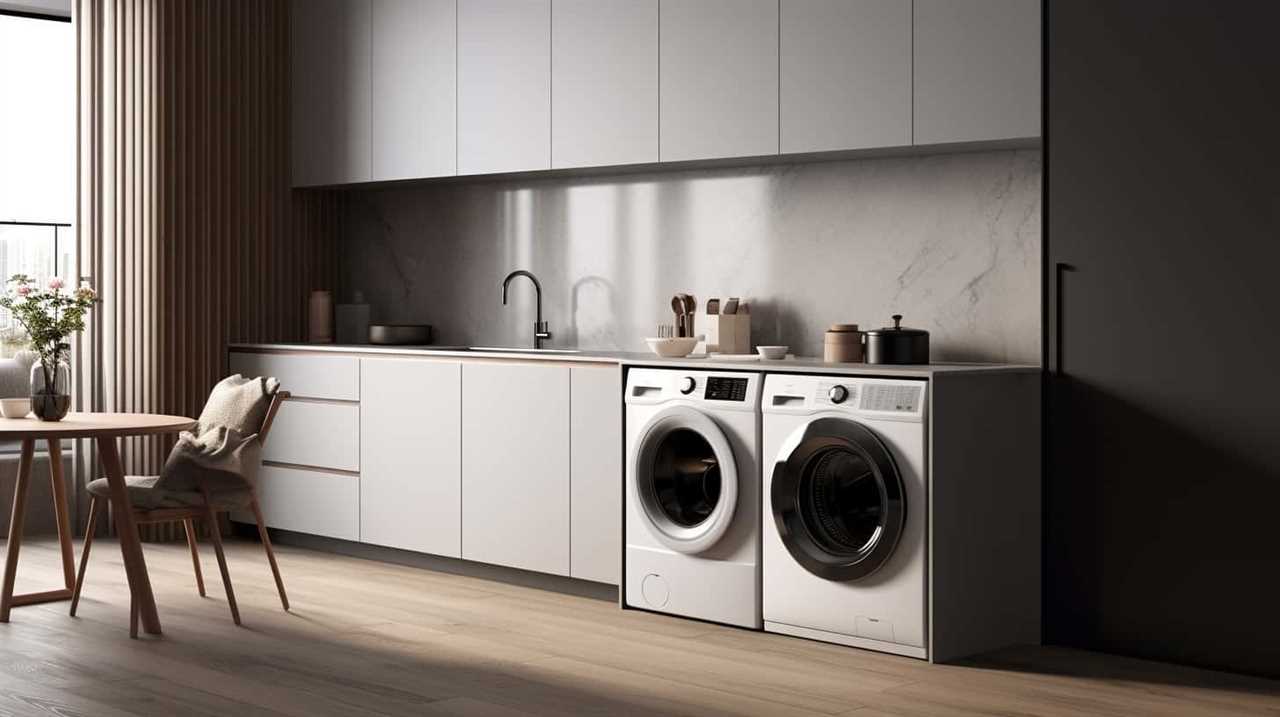
To address this issue, travelers may need to use a voltage converter or transformer to adapt the UK appliances to the lower voltage in the USA. It’s crucial to ensure that the transformer meets the specific voltage and wattage requirements of the appliances to ensure proper functioning and electrical safety during use.
Frequently Asked Questions
Can I Use My UK Hairdryer in the Usa?
Yes, we can use our UK hairdryer in the USA with a plug adapter. However, it is important to consider the voltage difference and ensure that the hairdryer is compatible with the higher voltage in the USA.
Do I Need a Power Adapter for My UK Laptop Charger in the Usa?
Yes, we need a power adapter for our UK laptop charger in the USA. UK appliances are not compatible with US electrical outlets due to the difference in voltage and plug type.
Are UK Televisions Compatible With US Electrical Outlets?
Using UK televisions in the USA may require voltage compatibility. It is essential to check if the television can handle the different electrical outlets and voltages between the two countries.

Can I Use My UK Toaster in the Usa?
Yes, you can use your UK toaster in the USA as long as you have a voltage converter to match the different electrical systems. Also, make sure you have an adapter for the UK toaster plug shape.
Do I Need a Transformer for My UK Electric Kettle in the Usa?
We need a transformer for our UK electric kettle in the USA to ensure proper voltage conversion. Just like a conductor guiding an orchestra, the transformer regulates the flow of electricity for safe and efficient operation.
Conclusion
In conclusion, while it’s possible to use UK appliances in the USA, it’s important to consider the voltage differences, plug types, power adapters, transformer requirements, and electrical safety standards.
Additionally, certain appliances, such as electronics and entertainment devices, heating and cooling systems, and laundry appliances, may require specific considerations.
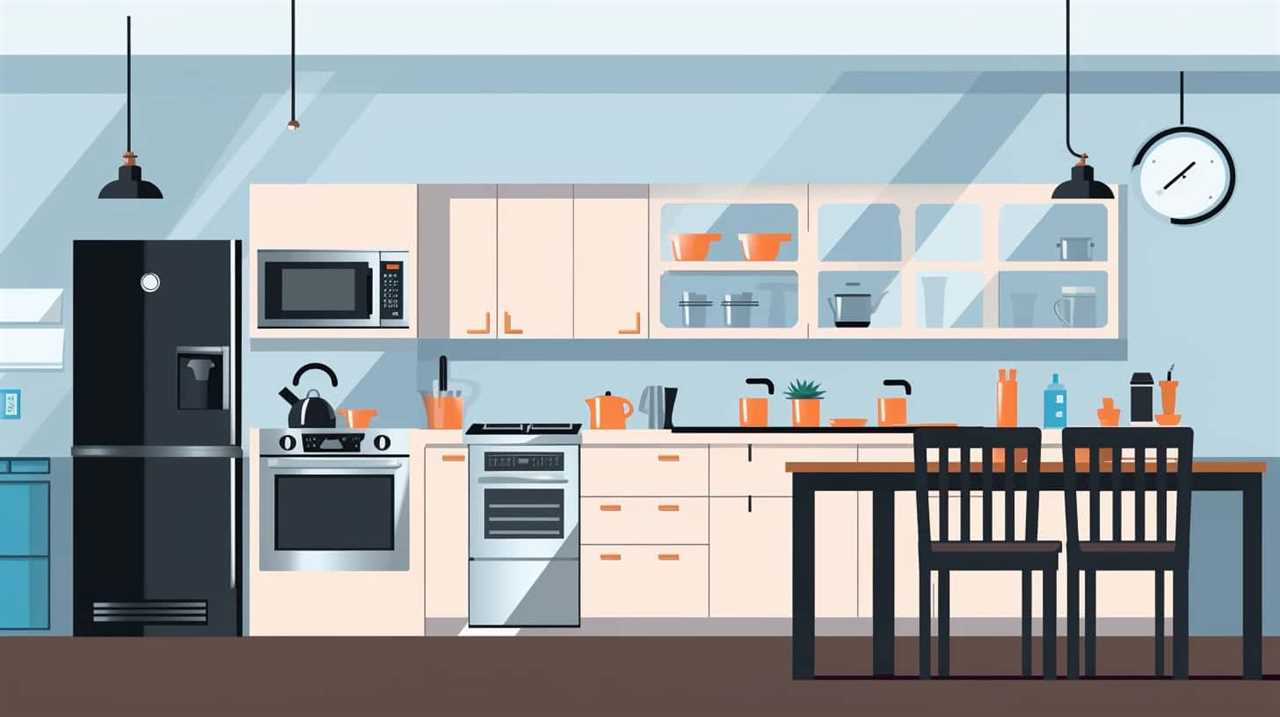
So, before using any UK appliance in the USA, it’s crucial to do thorough research and ensure proper compatibility. Remember, electricity is no joke, and taking precautions is paramount for a safe and efficient experience.
